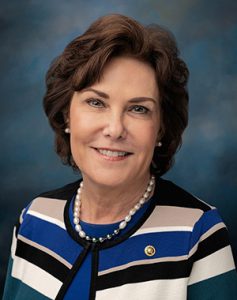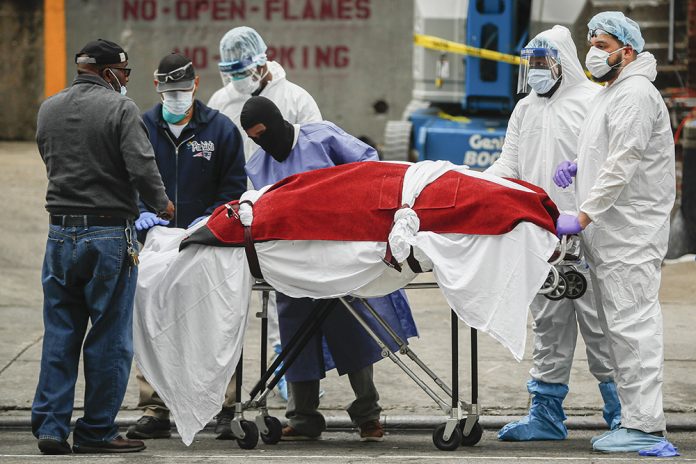By: JV Staff

Tamir Sapir, Former Taxi Drive Turned Real Estate Billionaire
The Sapir family is reportedly at it again.
Relatives of the late taxi driver who became a real estate billionaire, Tamir Sapir, is said to be battling with another member of the clan over $102 million worth of the estate.

Sapir’s son in law Rotem Rosen is entitled to nothing, according to Sapir’s son Alex. The comment was included in Manhattan Surrogate Court papers.
Rosen, who is currently in the process of ending his marriage to Sapir’s daughter Zina, says the Sapir Organization owes him for services rendered involving selling properties. By his estimation, that includes the building at 11 Madison Ave, which sold five years ago for an eye-popping $2.6 billion.
Rosen formerly served as chief executive officer of the Sapir Organization. His argument in court has reportedly centered on his being excluded following what he terms a “falling out” with Alex three years ago. According to spokespersons for Sapir’s family, Rosen has, in fact, received payment for services rendered, and is entitled to nothing more.

As therealdeal.com has reported, Sapir Corp. went private last week. Shareholders in Israel gave the thumbs up to a buyout plan of the real estate investment firm set as a loftier price than was original envisioned. The price: a nifty $5.54 million, or approximately 19.26 million shekels. A similar move was made, and failed, in 2017.
Sapir’s estate “had sunk to a measly $600 million by the time he died, according to court records,” according to the New York Post. “He was once slammed with $150,000 in fines when the feds discovered a gross collection of elephant tusks, animal hides and barstools upholstered in python and anaconda skins about his Florida yacht.”
Owned, Developed, Managed
Certainly, there is still plenty of moolah to fight over. The Sapir Organization is, as its web site points out, a multidisciplinary real estate investor, operator and developer currently led by Sapir’s son, President and Chief Executive Officer, Alex Sapir. “The firm has owned, developed and managed more than 7 million square feet of Manhattan real estate, including some of the world’s most iconic commercial assets throughout various cycles.
The portfolio spans multiple property classes, including commercial, residential and hospitality assets. The firm’s holdings in Manhattan include 260-261 Madison Avenue and 2 Broadway, which currently serves as the MTA headquarters of New York City.”
Two years ago, management launched Sapir Corp Ltd., a publicly traded real estate development company listed on the Tel-Aviv stock exchange. “Through Sapir Corp Ltd.,” the company noted, “Mr. Sapir has expanded the geography of the firm’s portfolio to Miami, Florida, which currently includes over 1M square feet of ground up, mixed-use development, and a luxury condo development in Surfside, Florida. In New York, the Sapir Corp portfolio also includes NoMo SoHo and 218 Madison Avenue.”

260 and 261 Madison Avenue were purchased by The Sapir Organization in 1997. Together, the properties hold a combined 1 million square feet. Located at the epicenter of Midtown East and steps from Grand Central Terminal, 261 Madison Ave. is a 28-story classic Manhattan office building, designed in the mid-century international style, updated for the 21st century. Freshly renovated spaces have been given a modern industrial redesign to emphasize natural light, openness, utility and a cutting edge design. The building is home to WeWork, Knotel, the acclaimed restaurant Zuma, major law firms and national banking institutes, while also serving as headquarters of The Sapir Organization.
2 Broadway is an office building at the south end of Broadway, near Bowling Green Park in the Financial District of Manhattan, New York City. It was built on the site of the New York Produce Exchange, and now houses the headquarters of the Metropolitan Transportation Authority. It is probably better known for its appearance in motion pictures. The building was featured prominently throughout the comedy-drama film The Apartment (1960), produced and directed by Billy Wilder, as the building in which the characters played by stars Jack Lemmon, Shirley MacLaine, and Fred MacMurray work. It was also a filming location in the thriller Mirage (1965), with Gregory Peck and Diane Baker.
Property and Politics

In 1995, Sapir bought 2 Broadway for $20 million, with the MTA as the only tenant in the building. The MTA signed a 49-year lease in July 1998, shortly after selling its New York Coliseum. Shortly after, according to Wikipedia, Sapir and the MTA agreed to conduct $39 million worth of renovations to 2 Broadway. “However, the renovations had become delayed and over budget, and Sapir and the MTA became involved in numerous lawsuits and countersuits. By 2000, the renovations were expected to cost $135 million. By 2003, the cost of the renovations had risen to $435 million.” Part of the budget increase was attributed to corruption by contractors who were renovating the buildings. One such contractor was later ordered to pay restitution to the MTA for corruption.
Strangely, the controversy has also been tapped by those on the political Left as a tool with which to pummel the Trump Administration. England’s DailyMail.com has used the Sapir/Rosen contest to try and paint President Donald Trump in a negative light. Its coverage back in February repeatedly stressed Rosen’s alleged connection to the president:
“Court papers show that Rosen, who is close friends with President Donald Trump, is renting a $50,000 a month penthouse at Trump Park Avenue… The couple married in 2007 in a lavish wedding hosted by President Trump at his Mar-a-Lago resort in Palm Beach, Florida… Rosen went with Trump to Moscow for Miss Universe in 2012, invested heavily in his failed Trump SoHo hotel, and is believed to have pulled strings to try to make Trump Tower Moscow a reality.”
Sacramento Real Estate Mogul Michael Lyon Back in Jail

Michael Lyon used to be a high-powered real estate CEO. Now he is back in jail on drug charges. His name was seen all over Sacramento homes at one point.
He once headed the largest real estate firm in the region, along with a number of other companies, and was a philanthropic mainstay for charity groups ranging from the UC Davis Children’s Hospital to Loaves and Fishes, Sacramento Bee reported.
Lyon, 64 years old, was let out of a state prison in 2019 having spent a segment of his 76-month sentence from 2018 stemming from a conviction on charges of electronic eavesdropping and videotaping connected to sex tapes filmed in 2013 and 2014.
Michael Lyon was sentenced than six years in prison for secretly filming the women he paid for sex, concluding the fall of a man whose name for decades was all but synonymous with home ownership in Sacramento, The Bee stated.
The women had no idea they were being videotaped until they were contacted by Sacramento district attorney’s investigators in 2015 and never would have agreed had they known; prosecutors argued.
This was the second time he faced similar charges. Lyon pleaded guilty in 2011 to felony counts of electronic eavesdropping and served a portion of his one-year sentence in the county jail and on home detention. He later settled a civil suit for $2.5 million and an apology to former nannies, babysitters and friends who said he had secretly taped them in bathrooms, bedrooms and showers.
In early April, Lyon returned to the prison amid allegations of drug and parole violations. Less than a year after being released from prison. Methamphetamines became his new poison, once clandestine pornography was out of question, KCRA reported.
According to online sources, Lyon was placed under arrest on a felony charge of possession for sale of controlled substances. There was also a misdemeanor count of possession of dangerous drug-controlled substances.
Sacramento Police spokesman Officer Karl Chan wrote in an email to The Sacramento Bee that “Officers conducted a parole search on Mr. Lyon, and during the course of the search located narcotics. He was arrested in the 300 block of Las Palmas Avenue.”
Lyon’s fall from grace reads like something out of Homer. His success began to fracture in 2009 with the end of a more than two-decade marriage to Kimarie Lyon. In the course of what the Bee termed an “extraordinarily nasty” divorce, the one-time wife “told federal investigators that her husband “had spent approximately $300,000 in one or two months on hookers, drugs and pornography,” according to a confidential law enforcement document reviewed by The Bee.”
The one-time mogul “was once one of the most prominent business and philanthropic figures in the Sacramento region, and until his legal troubles headed the Lyon Real Estate firm and other companies,” according to the Bee. “He was a Boy Scout leader and civic activist who donated time and money to various charitable causes. But his weakness for prostitutes and secret videotapes led to a stunning fall from grace that began with an acrimonious divorce.”
The Strange Case of “Lucky Luke” Brugnara

It was nearly five years ago – October of 2015, to be exact – that the strange case of “Lucky Luke” Brugnara was, in the words of San Francisco Weekly, “finally over.”
Brugnara was born in the Sunset District of San Francisco, the son of a “juvenile hall manager”. He went to school at St. Ignatius College Preparatory, a private preparatory Jesuit school. Brugnara was a competitive flycaster during his teenage years and set several national accuracy flycasting records in the American Casting Association which still stand today. Brugnara graduated from San Diego State University in 1987.
Brugnara started his real estate career in San Francisco in 1993 by buying a note for $1.5M for the Kress Building at 939 Market Street, foreclosing on the note, and then borrowing $3M against the property. Brugnara’s proceeded buy and sell a series of office buildings in San Francisco. In 1997, he owned 500,000 square feet of office space in downtown San Francisco, SF Gate reported in an article called “Young Gun” .

Brugnara first became involved in Las Vegas real estate in 1999, when he attempted to buy the Desert Inn for $270 million but lost out to an all-cash offer from Sun International and Steve Wynn. In November 1999, he bought the Silver City Casino and the Las Vegas Shopping Plaza on the Las Vegas Strip for $40 million, with plans to replace it with a larger casino and hotel, but converted the property into a shopping center in 2004 after the Nevada Gaming Commission denied him a gambling license in 2001, The Las Vegan documented.
Gaming Commission had cited poor financial recordkeeping, claims that Brugnara had failed to file tax returns, conflicts with San Francisco regulators, and allegations that Brugnara had made death threats. In response, Brugnara stated that the Nevada Gaming Commissioners were “a bunch of wind-up dolls” representing Las Vegas incumbents, and threatened to file suit, but eventually decided not to do so, preferring to re-apply and address the Gaming Commission’s concerns, Las Vegas Sun reported.
In 1998, Brugnara was sued by the SF City Attorney for improper disposal of medical waste at his Medico-Dental Building. In 2000, the San Francisco Superior Court decided against Brugnara, and imposed a $1 million penalty, SF Gate reported.
A decade later the troubles of “Lucky Luke” continued to mount,
In 2010 Brugnara pleaded guilty to charges of tax evasion related to the sale of $45 million in commercial property and violations of the Endangered Species Act for blocking an opening in a private dam to prevent trout migration, according to Wikipedia. “He was sentenced to 30 months in federal prison on the tax charges. Brugnara’s later request to withdraw his guilty plea and go to trial was denied by the trial judge, and the decision was affirmed by the Ninth Circuit Court of Appeals in 2011. Brugnara was released from prison in 2012.”
Bragnara did not learn his lesson, only 2 years later “Lucky Luke” was back in court on more serious charges.
Citing ABC 7, the publication reported that the one-time real estate mogul had been given a sentence of seven years in federal prison. The sentence was the cherry on the icing of a cinematic spree of “art scams, jailhouse escapes, and courtroom theatrics.”
“Brugnara, a San Francisco native who made a fortune snapping up commercial office buildings in the city, along with casinos and shopping plazas in Las Vegas (and a mansion once leased to singer Michael Jackson), has a checkered legal history,” noted sfweekly.com. “Per ABC 7, Brugnara pleaded guilty to “filing false tax returns, failing to report $45 million in capital gains, and violating the Endangered Species Act for poaching steelhead trout on his land in Gilroy.”
In May 2014, Brugnara was charged with mail fraud for refusing to pay for $11 million in art delivered to his Sea Cliff estate, Wikipedia added. “While awaiting trial on these charges, Brugnara was furloughed into the custody of his attorney, and escaped from the San Francisco federal courthouse. He was recaptured a week later in Los Gatos, California.”
Brugnara represented himself in the trial, which was tried before Judge William Alsup of the Northern District of California. By the end of the trial Judge Alsup had sentenced Brugnara to 471 days in prison for contempt due to Brugnara’s conduct during the trial, including routinely ignoring Judge Alsup’s evidentiary and procedural rulings, yelling at witnesses, throwing tantrums, and insulting the government’s attorneys, including calling U.S. District Attorney Robin Harris a “Nazi” in front of the jury, Courthouse news reported. Brugnara was convicted on six of the nine counts he faced, and sentenced to seven years in prison
Brugnara made news once again, so to speak, in October of 2019 when his seven-bedroom, six-bathroom home with spectacular views of the Golden Gate bridge was listed for sale for $15 million through Sotheby’s. According to reports, Brugnara had purchased the property at 224 Sea Cliff Avenue through one of his companies in 2002 at a cost of $7 million.
“The home had been where comedian Cheech Marin lived while filming Nash Bridges, with a 2003 Forbes article describing the Hollywood figure’s art collection, hung on the home’s walls, as a trigger for Brugnara’s own artistic passion,” reported Australia’s domain.com.

























